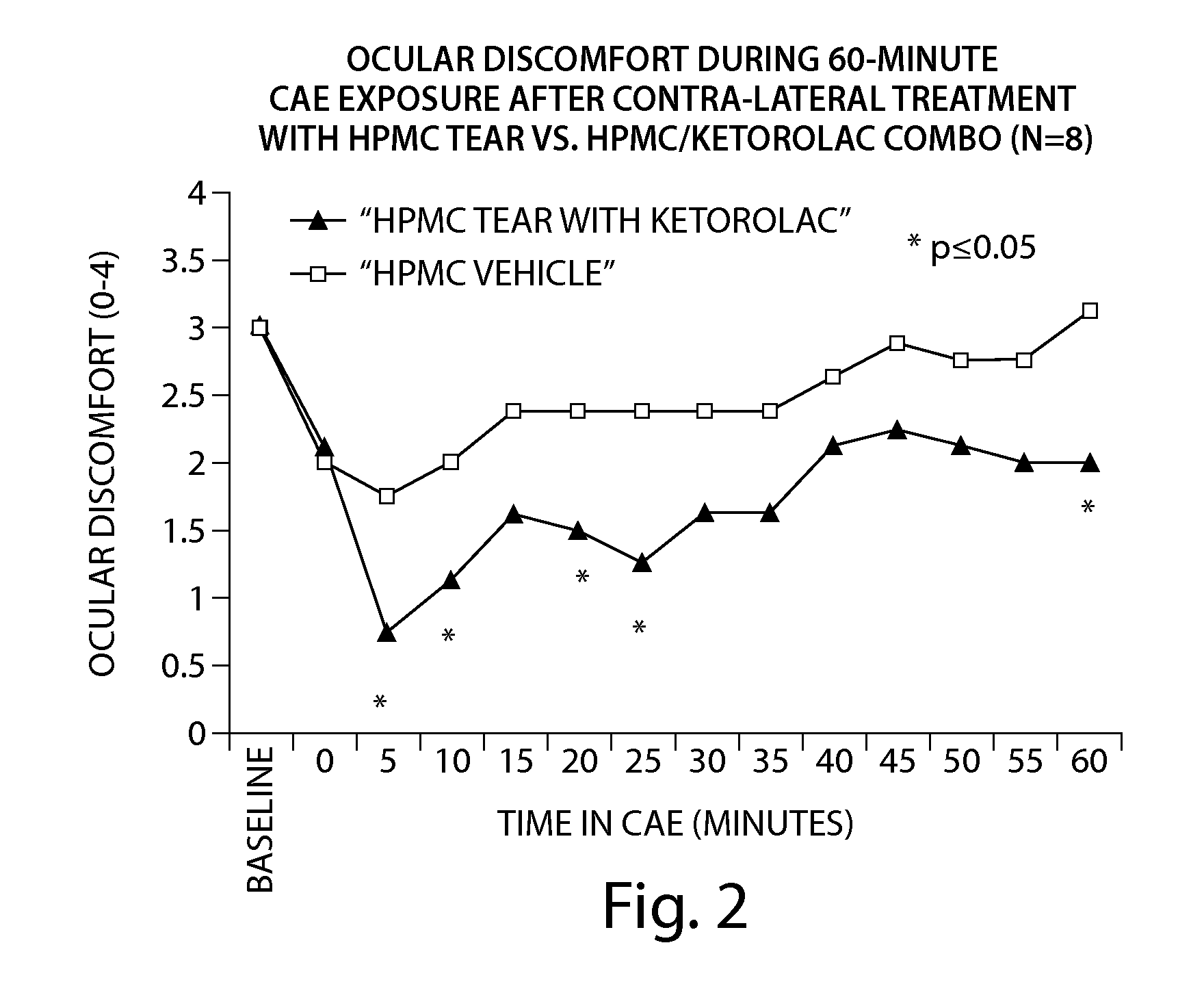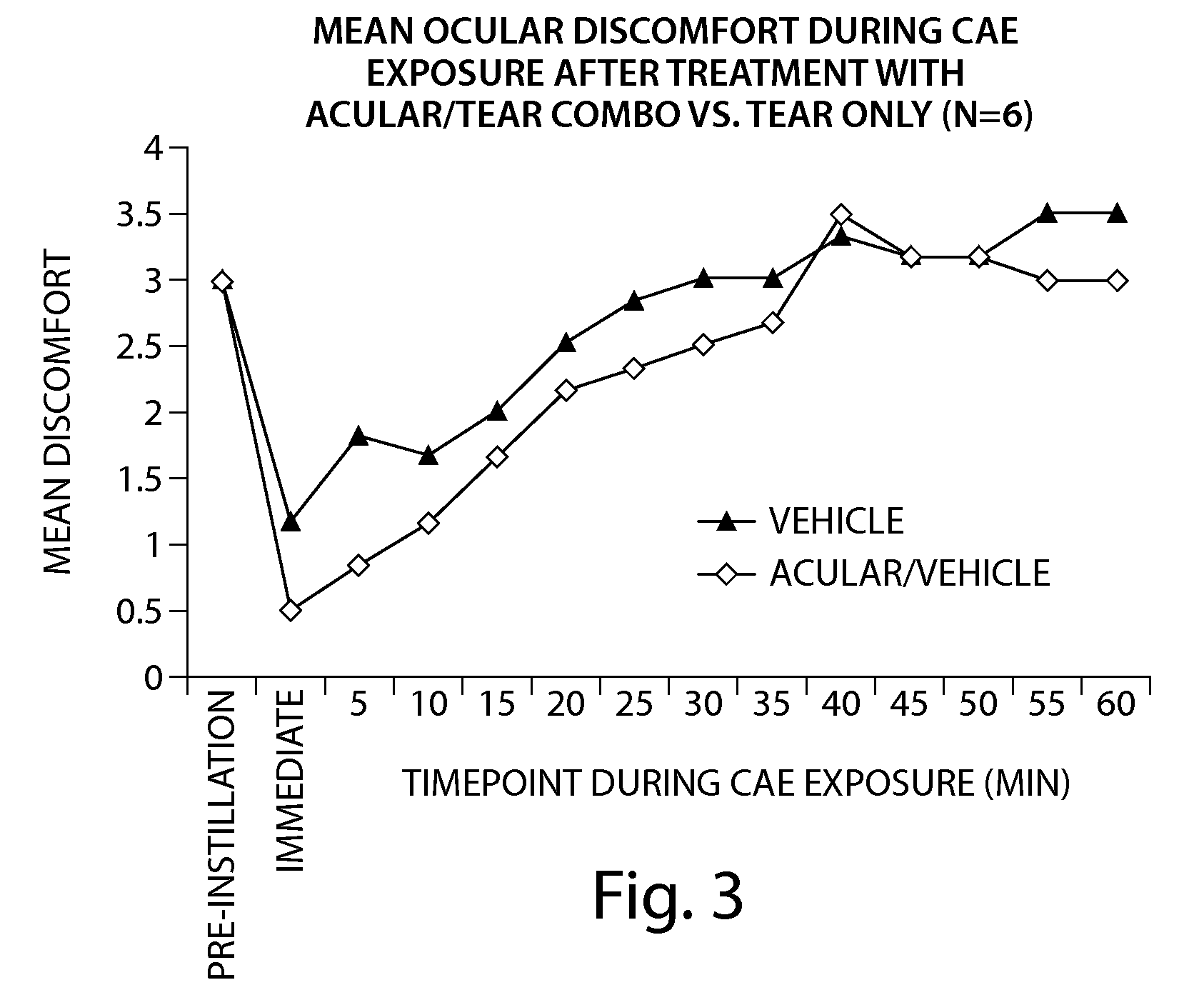Formulations and Methods for Treating Dry Eye
a technology of formulations and dry eye, applied in the field of ophthalmic formulations, can solve the problems of affecting the normal protective layer of tear film, affecting the ocular surface, and promoting desiccation and damage of surface cells, so as to prolong the integrity of tear film, relieve ocular discomfort, and alleviate the effects of signs and symptoms
- Summary
- Abstract
- Description
- Claims
- Application Information
AI Technical Summary
Benefits of technology
Problems solved by technology
Method used
Image
Examples
examples
[0130]The invention now being generally described, it will be more readily understood by reference to the following examples which are included merely for purposes of illustration of certain aspects and embodiments of the present invention, and are not intended to limit the invention in any way.
example i
Formulation of Acular® (Ketorolac Tromethamine 0.5% Wt / Vol Ophthalmic Solution) with a Carboxymethyl Cellulose (CMC)-Based Artificial Tear
[0131]The following study compared the efficacy of ketorolac tromethamine 0.5% (wt / vol) ophthalmic solution (Acular®), combined with a CMC-based artificial tear (Refresh®) (1:1 dilution, final concentration ketorolac tromethamine 0.25% (wt / vol)), and Refresh® alone, in reducing ocular discomfort.
[0132]A specially developed chamber called the controlled adverse environment (CAE) was used as a model for evaluating ocular discomfort caused by irritation. The CAE is a chamber in which humidity is controlled at a low level, and temperature, wind flow, lighting and visual tasking are all controlled. Patients who enter the CAE will develop ocular discomfort over time. This model allows for the precise evaluation of agents which can act to treat dry eye and / or ocular irritation.
[0133]Baseline ocular exams were performed by an ophthalmologist on eighteen s...
example 2
Formulation of Acular® (Ketorolac Tromethamine 0.5% (Wt / Vol) Ophthalmic Solution) with a Hydroxypropylmethyl Cellulose (HPMC)-Based Artificial Tear
[0139]The following study compares the efficacy of an HPMC-based artificial tear with a combined formulation of Acular® and an HPMC-based artificial tear (1:1 dilution, final concentration ketorolac 0.25% (wt / vol)), in reducing ocular discomfort.
[0140]Baseline ocular exams were performed by an ophthalmologist on eight subjects. Subjects then entered the CAE (described in Example 1) and remained for up to 90 minutes. Every 5 minutes the ocular discomfort of each eye was assessed by the subject on a standardized 0-4 ocular discomfort scale, and was recorded by study staff. When an eye manifested a score of at least 3 at two consecutive assessments, 1-2 drops of the HPMC-based tear was instilled in one eye and 1-2 drops of the combined Acular® / HPMC-based tear formulation in the contralateral eye. Subjects recorded comfort of the drop immedia...
PUM
| Property | Measurement | Unit |
|---|---|---|
| Fraction | aaaaa | aaaaa |
| Fraction | aaaaa | aaaaa |
| Fraction | aaaaa | aaaaa |
Abstract
Description
Claims
Application Information
 Login to View More
Login to View More - R&D
- Intellectual Property
- Life Sciences
- Materials
- Tech Scout
- Unparalleled Data Quality
- Higher Quality Content
- 60% Fewer Hallucinations
Browse by: Latest US Patents, China's latest patents, Technical Efficacy Thesaurus, Application Domain, Technology Topic, Popular Technical Reports.
© 2025 PatSnap. All rights reserved.Legal|Privacy policy|Modern Slavery Act Transparency Statement|Sitemap|About US| Contact US: help@patsnap.com



